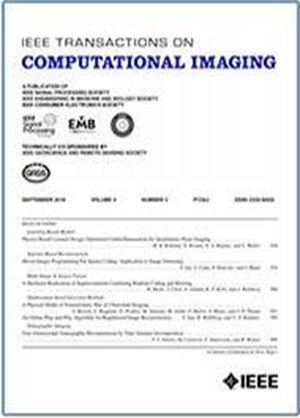A Helical Reconstruction Network for Multi-Source Static CT
IF 4.8
2区 计算机科学
Q2 ENGINEERING, ELECTRICAL & ELECTRONIC
引用次数: 0
Abstract
Nanovision static CT is an innovative CT scanning technique that features the arrangement of the X-ray source array and detector array on two parallel planes with a consistent offset. This configuration significantly enhances temporal resolution compared to conventional CT, providing particular advantages for dynamic organ imaging and low-dose imaging applications. However, it also introduces cone angle and sparse angle artifacts during helical scanning. To address this, this paper proposes a novel theoretical analysis framework to systematically analyze the artifact generation mechanism of the traditional FDK algorithm in this scenario. Through numerical solutions and data superposition, we are able to attribute the causes of artifacts for the first time to two types of data incompleteness issues arising from the lack of cone angle data and insufficient sparse angular sampling. Building on these insights, we propose an innovative dual-module collaborative reconstruction network. First, we introduce the Helical Bi-directional xFDK algorithm (HbixFDK), which employs a limited-angle weighted compensation strategy to mitigate data incompleteness in the cone angle region. Next, we develop the attention-based Helical FISTA network (HFISTA-Net), which utilizes the output from HbixFDK as the initial reconstruction to effectively suppress sparse sampling artifacts. Extensive experiments conducted on the TCIA dataset and clinical static CT scans demonstrate that our proposed method significantly reduces both cone angle and sparse angle artifacts in static CT helical scanning. The approach achieves rapid and high-precision helical reconstruction, showcasing superior accuracy and computational efficiency.多源静态CT螺旋重建网络
纳米视觉静态CT是一种创新的CT扫描技术,其特点是x射线源阵列和探测器阵列排列在两个平行平面上,具有一致的偏移量。与传统CT相比,这种配置显著提高了时间分辨率,为动态器官成像和低剂量成像应用提供了特别的优势。然而,在螺旋扫描过程中也会引入锥角和稀疏角伪影。针对这一问题,本文提出了一种新的理论分析框架,系统分析了传统FDK算法在该场景下的伪影生成机制。通过数值解和数据叠加,我们首次将伪影的原因归结为两种类型的数据不完整问题,这两种问题是由于缺乏锥角数据和稀疏角度采样不足引起的。在此基础上,我们提出了一种创新的双模块协同重构网络。首先,我们介绍了螺旋双向xFDK算法(HbixFDK),该算法采用有限角度加权补偿策略来缓解锥角区域的数据不完整性。接下来,我们开发了基于注意力的螺旋FISTA网络(HFISTA-Net),该网络利用HbixFDK的输出作为初始重构来有效抑制稀疏采样伪影。在TCIA数据集和临床静态CT扫描上进行的大量实验表明,我们提出的方法显著降低了静态CT螺旋扫描中的锥角和稀疏角伪影。该方法实现了快速、高精度的螺旋重建,具有较高的精度和计算效率。
本文章由计算机程序翻译,如有差异,请以英文原文为准。
求助全文
约1分钟内获得全文
求助全文
来源期刊

IEEE Transactions on Computational Imaging
Mathematics-Computational Mathematics
CiteScore
8.20
自引率
7.40%
发文量
59
期刊介绍:
The IEEE Transactions on Computational Imaging will publish articles where computation plays an integral role in the image formation process. Papers will cover all areas of computational imaging ranging from fundamental theoretical methods to the latest innovative computational imaging system designs. Topics of interest will include advanced algorithms and mathematical techniques, model-based data inversion, methods for image and signal recovery from sparse and incomplete data, techniques for non-traditional sensing of image data, methods for dynamic information acquisition and extraction from imaging sensors, software and hardware for efficient computation in imaging systems, and highly novel imaging system design.
 求助内容:
求助内容: 应助结果提醒方式:
应助结果提醒方式:


